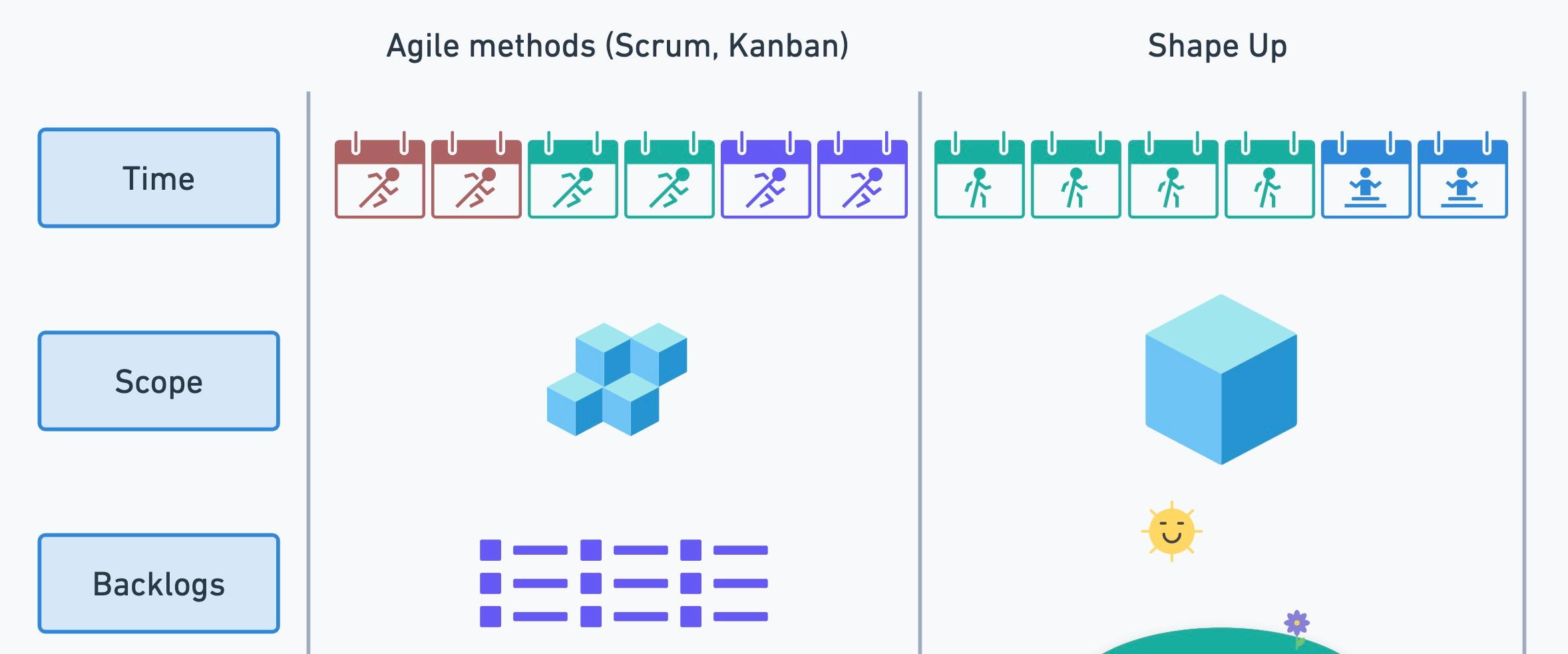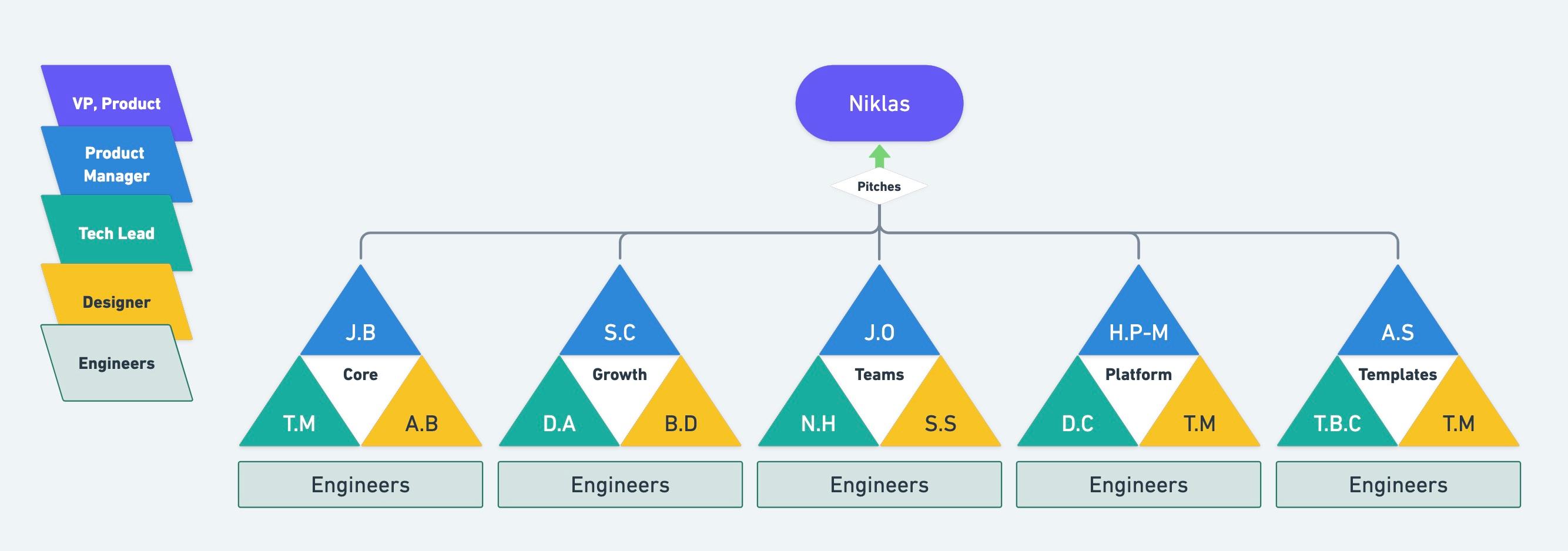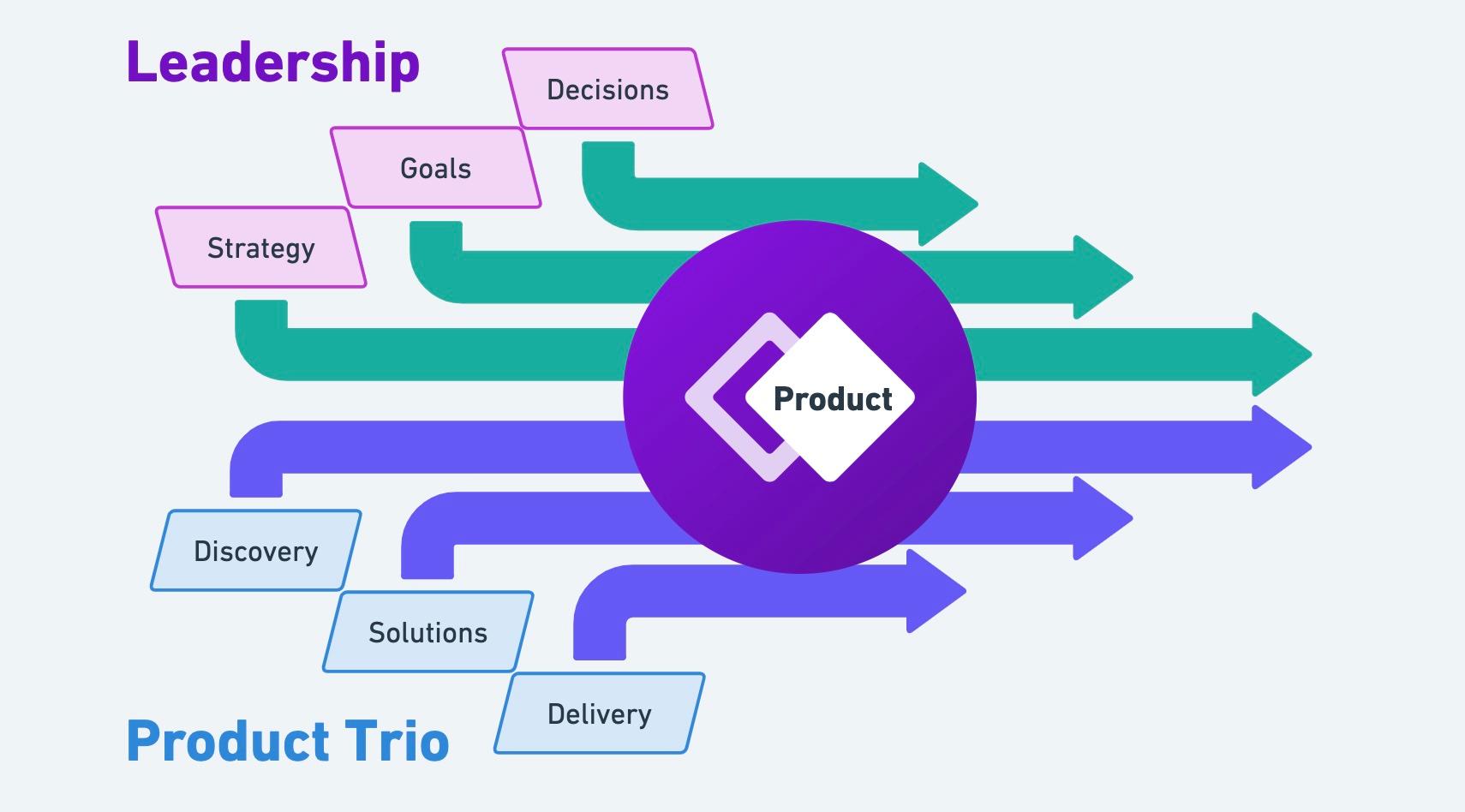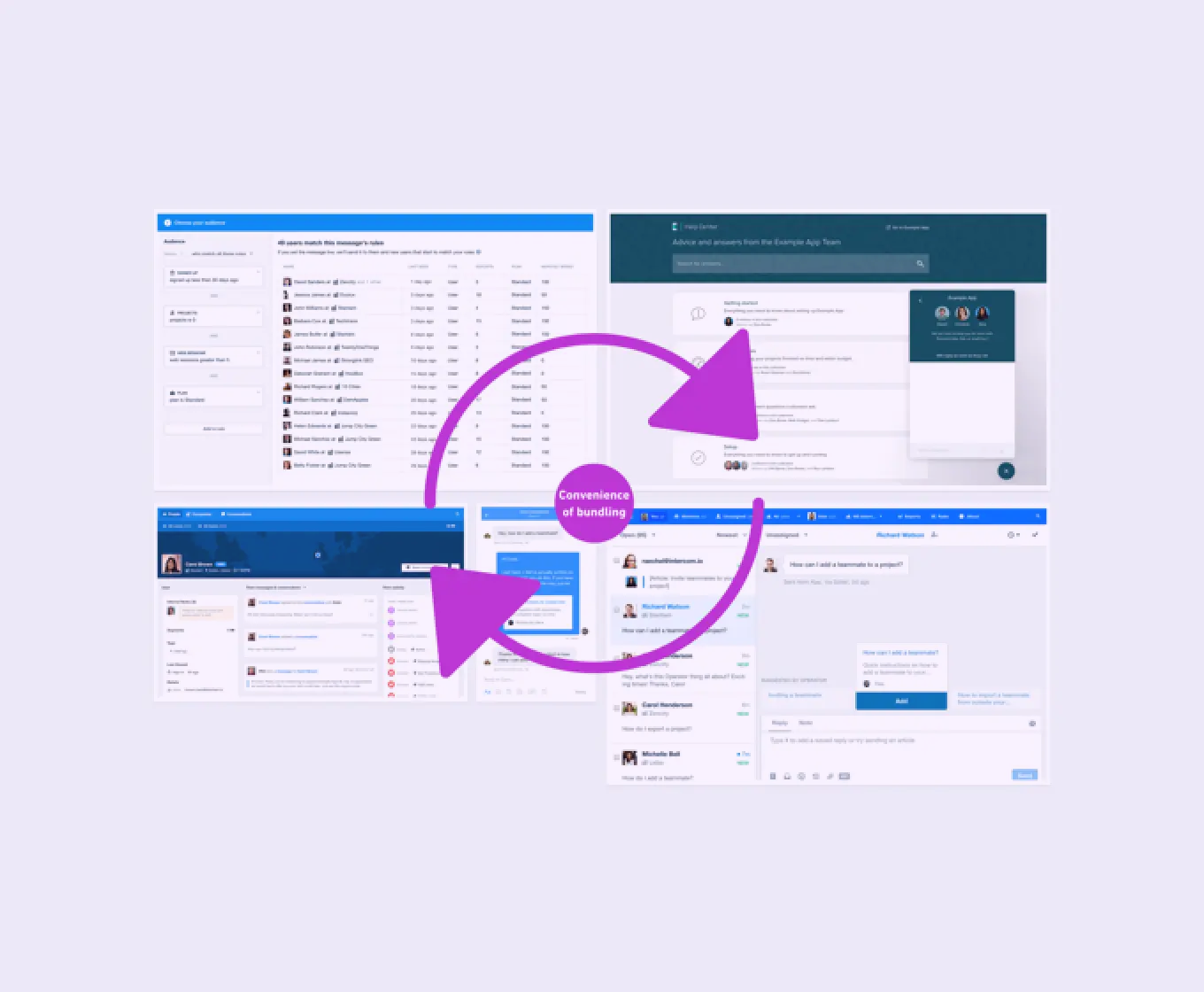Empowered product development: Adapting ‘Shape Up’ to give teams more sway

Shape Up by Basecamp is a practical, and pragmatic introduction to the product management process. It has clear-cut benefits over more commonly used Agile methodologies (which we cover below) but beyond those, it’s also a full set of tools for ideation and planning - with Shape Up it’s easy to describe and prioritize what you build.
However, it includes power dynamics that will slow you down and potentially kill your team’s motivation. It may also lead you to build the wrong features as you scale. This article outlines how we’ve adapted Shape Up at Whimsical to avoid the pitfalls, and get the best result.
Building with Shape Up
When it comes to the process of actually delivering products, Shape Up differs from Agile development methods in three main ways:
- Time - Shape Up runs in six week cycles, not two week sprints. The intention here is more focus time, larger pieces of work, and fewer meetings. All big wins, and part of the reason we chose this method for Whimsical.
- Scope - In Agile development, engineers are given bite-sized, specific pieces of work. Shape Up offers less defined, larger areas to work and leaves engineers with room to make decisions, and their own mark on the project.
- Backlogs - There aren’t any in Shape Up. If a project isn’t done within a cycle, and there’s still an appetite for completing it, it‘s pitched again as a fresh project at the start of the next cycle.

There’s one key similarity between Agile methods and Shape Up; both are top-down frameworks. In Shape Up, leaders “pitch” features then hold a “betting table” where they decide which ones to build, and hand them over to a team of designers and engineers:
[...] we shape the work before giving it to a team. A small senior group works in parallel to the cycle teams. They define the key elements of a solution before we consider a project ready to bet on. - Ryan Singer
This quote comes directly from Basecamp’s book “Shape Up: Stop Running in Circles and Ship Work that Matters”. It’s a fantastic insight into how they build products, but you’ll find that only 3 out of 80+ people are part of the pitch process.
I have seen many founders introduce Shape Up and use it as a top-down framework which readily (and sadly) leans towards micromanagement. That works for some, but at Whimsical we believe there is a better way.
I have a ton of respect for the quality of the product that Basecamp has built, and it’s working for them. But over the years, I have learned that I am no Steve Jobs or David Heinemeier Hansson.
And that’s ok. That’s not my role.
I need to substitute my personal lack of genius with strategy, leadership, and (most importantly) empowerment ofour 5 product teams.
Empowered Shape Up at Whimsical
People that know me or have read my blog (where this post was originally published) will know that I am a huge fan of how Marty Cagan builds empowered product teams. (A process he wrote a book about). At Whimsical we combine his lessons with Shape Up to create “Empowered Shape Up”
Whimsical’s product teams
Following his framework, each product team consists of a product manager, designer, tech lead, and a number of engineers depending on the scope of the team.
The product manager, designer, and tech lead form the “product trio”.
At Whimsical it’s not the leadership team that write pitches, it’s the product trios. They are the people who best know their product and customers, and are best suited to speak to how we achieve our goals. The engineers on the team are also welcome to participate in the process, but are not required to do so.

Whimsical's Product Teams
Whimsical's Product Teams
Strategy
This is the core product piece that I, as the VP of Product, own. This is my “pitch” on what the future of Whimsical is, and how to get there. Writing a good strategy is many things, and while I won’t try to get into details here, it’s a document that sets a long-term plan for what Whimsical could be in the future. Think of it as a concept car, a prototype made of clay, without an engine, and with wheels that can’t turn. It provides a direction and might include some design ideas, but the smaller details aren’t defined until release time comes closer. Chances are that no car manufacturer will ever release a car that is 1:1 with their concept car, but it has served its purpose by showing their team and the public a direction.
Goals
An empowered team doesn’t function without clear goals. This is where I, as the leader of the product organization, take the company’s overall goals and marry them with the product strategy. From there I derive concrete goals for each of the product teams that they can deliver on and feel excited about. We use quarterly goals and have cut down the cycles we run to 5 weeks of work and 1 week of cooldown to be able to fit two cycles within a quarter.
Our goals are inspired, but not tightly guided by the OKR format. As a leader, I decide on the objectives and then work with my team on the key results (how to measure the success of the objective).
We try to always have the goals ready two weeks before a new quarter starts. This allows the teams the time needed to shape work for the first cycle that starts the first week of the new quarter.

Cycle timeline
The Team
Each product trio runs a dual-track process where they focus on writing and developing pitches for the next cycle while they also deliver on the pitches that were selected in the betting table for the current cycle. The trio will run a mix of discovery efforts to evaluate both the problems and the solutions that they outline in the pitches, helping us to have a higher certainty that we are building the right thing.
Product Jams
Product jams are bi-weekly meetings where our CEO, the Head of Engineering, the product trio, and I discuss the pitches that are being shaped. It’s the product trio that leads the meeting and the agenda. Leadership is not in the meeting to make decisions but rather to share feedback, knowledge, and thoughts on the direction of the individual pitches. The meeting is very much inspired by Pixar’s concept of Braintrusts.
Betting Table
For sanity’s sake, we do a betting table for each product team. We are not fans of long meetings, and with five teams in a single meeting we would run out of energy. Participants of the betting table are our CEO, the Head of Engineering, the product manager of the team, occasionally 1-2 other stakeholders, and me.
All members of a betting table have at least 2 days to read through and comment on each pitch before the betting table. In the meeting, the product manager will walk through each pitch and we will discuss it as a group. We usually agree easily on which ones to select for the cycle, but if we disagree I am the final decision maker, allowing me to set the right direction for the teams. After the betting table, the team will end up with a number of pitches that they have created to finish and deliver. When the team delivers on features I also have final say on its release. I rarely use that authority and trust the teams to do their thing.
The flipped power dynamics of Empowered Shape Up
This leaves us with a process where I, as the leader, have multiple ways to influence the direction of our product:
- Product strategy
- Goals and key results
- Betting table decisions
- Release decisions
The product teams own and are empowered to drive:
- Finding and defining problems to solve
- Solution discovery
- Pitch writing
- Delivery

This moves most of the power to the product teams. It allows us to pour more raw, amazing, brainpower, from more diverse sources into solving hard problems and driving the business forward. When they shape a solution or feature, they really do shape up.
Want to learn more about how you might apply these principles to your product teams? Reach out to us here!



